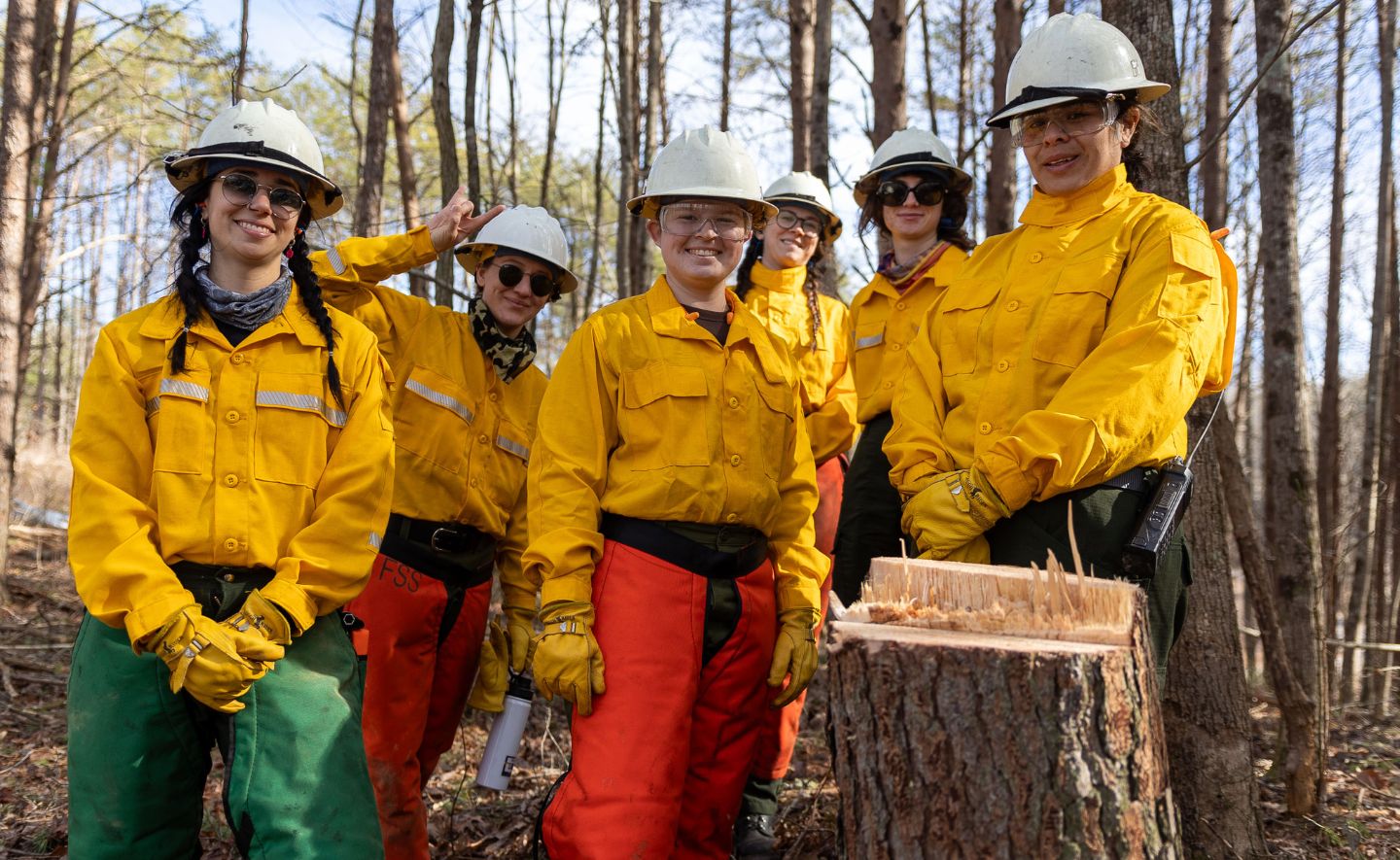Last fall, Tiffany Ashley was looking for something different. Tired of working in the service industry, she longed to be outside and become part of a community. So, she decided to sign up for the opportunity of a lifetime and join the SCA’s 2024 Table Rock Fire and Fuels Crew.
“What they’re able to facilitate here is genuinely, positively life-changing. Everybody leaves an impact, no matter how big or how small. Not only is it providing me with skills I can take into the future, but also pride and a sense of direction that I was lacking,” said Ashley, 33, of Santa Rosa Beach, Florida. “What we have been able to do both within our ecosystem and our immediate surroundings by bringing together this group of strangers has facilitated one of the most positive experiences I have had this far.”

“I wake up every morning so excited to get out there and do it. Every day, there is a new thing to learn or do,” said crew member Colleen McDermott, 21, of Philadelphia. “Fire can be scary. But being right next to it and really understanding how these burns operate and how much thought goes into this has really been surprising to me. I’ve really grown so much.”
As part of the Table Rock Fire Crew, the team works and travels throughout the Southern Region, gaining hands-on experience in prescribed fire, hazardous fuels reduction, and fire suppression under the supervision of U.S. Forest Service firefighters. The crew may even have opportunities to respond to active fires throughout the season.
“Firefighting is still a very male-dominated field. No matter what that culture looks like, it still feels like all eyes are on you no matter how supportive they may be,” McDermott said. “It’s so nice to have that pressure lifted and not have to worry about that. I really love that freedom to be vulnerable. It can be dangerous work, and you don’t want to be uncomfortable. Supporters of these programs are doing a lot for the land and personal development of the young people doing the work.”

During a wildland fire, varying plant materials, including grasses, shrubs, trees, dead leaves and fallen pine needles, can act as fuel. As these burnable materials pile up, so do the chances of catastrophic wildland fire. In the right conditions, excess fuel allows fires to burn hotter, larger, longer and faster, making them more difficult and dangerous to manage, making it essential to have trained wildland firefighters and fuels staff at the ready.
“It’s super exciting. One of my favorite parts of the job is seeing the light click when a program participant actually knows that they can do this. Seeing something that you thought was almost impossible and doing it is an amazing feeling,” said Elizabeth Skelly, U.S. Forest Service Crew Supervisor. “Getting a good foundational experience as a wildland firefighter sets you up for success. It’s physically and emotionally demanding at times but is super rewarding for the right person.”
The SCA offers young people from all walks of life the opportunity to learn and grow through hands-on environmental conservation programs. You can help with a donation to the Student Conservation Association.